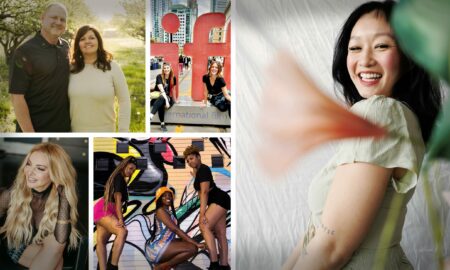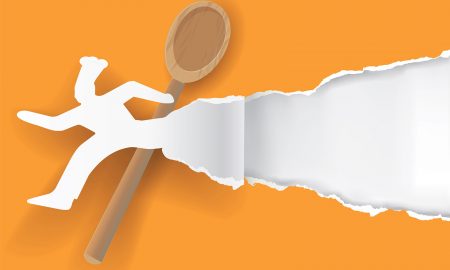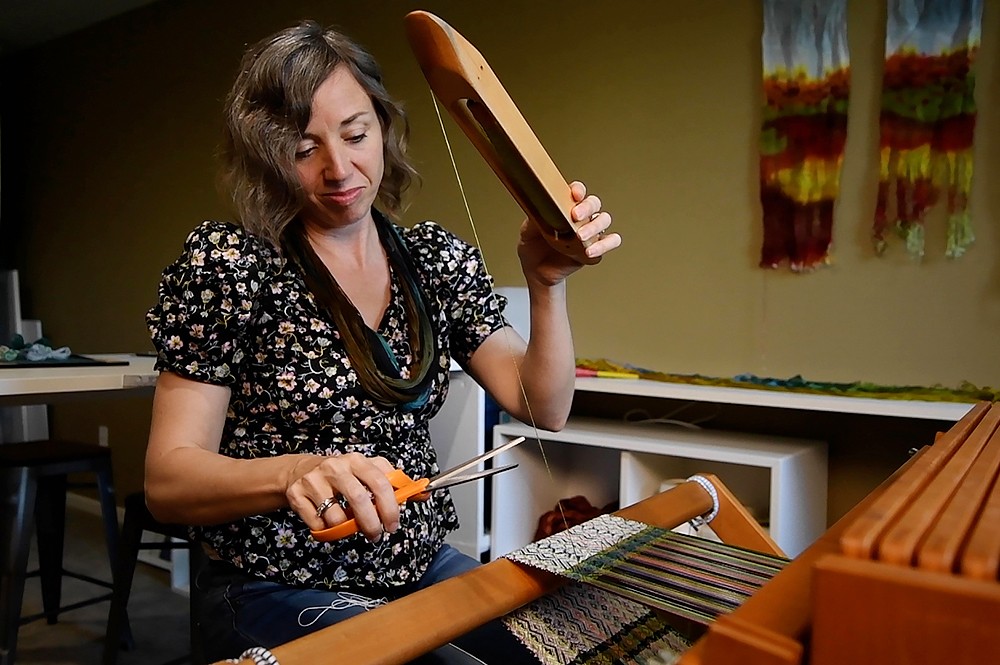 Today we’d like to introduce you to Debbie Barrett-Jones.
Today we’d like to introduce you to Debbie Barrett-Jones.
Hi Debbie, it’s an honor to have you on the platform. Thanks for taking the time to share your story with us – to start maybe you can share some of your backstories with our readers?
I have been a textile artist in the Kansas City area for over 16 years. At a young age, crafting helped me manage my anxiety. As I got older, weaving became a meditative and therapeutic practice that helped me manage and process grief and stress.
In 2016, I began to envision my “Healing with Weaving” initiative, to highlight the importance of how art, specifically weaving, can be a therapeutic practice for healing. Though my work has been in hospitals and places of worship for a number of years- providing solace and reflection for visitors- I have since wanted to find ways to teach people in these, or like spaces, how to weave in order to provide them with direct access to the healing powers of the weaving process.
I am currently pursuing an MFA at the University of Kansas in Textile Art Practice where I taught a remote Introduction to Weave class this past spring. I instructed students how to weave on a portable, laser-cut frame loom. I subsequently asked them while weaving to focus on something or someone they had lost recently. It turned out to be an incredibly meaningful and healing project for both my students and myself. Throughout the class, I thought about a time I had spoken in front of hundreds of people during an ArtsKC Inspiration Breakfast as a featured artist. I realized that even then I had been wanting people to experience weaving as a healing practice.
This summer and fall, I am launching a pilot Healing with Weaving Community Outreach Pilot Project for patients, family members, and staff at Children’s Mercy Hospital Adele Hall Campus, the site of my first weaving commission in a hospital, and a place I hold dear to my heart. I will provide Healing with Weaving Frame Loom Kits that will include all the necessary weaving supplies and instructions. Also included will be in-person workshops (as permitted) and an instructional video (which can be viewed on www.healingwithweaving.org). During this time of tremendous loss and pain, we feel that we’re collective, providing these kits along with video and workshops will hopefully provide a space for healing, hope, and restoration in the hospital setting.
After completing this first project for Children’s Mercy, I plan to continue to partner up with other local medical and counseling centers, high schools, and educational institutes- including the University of Kansas- to help people slow down and take time for self-care via being creative- focusing on material, color, pattern: one thread at a time. I deeply believe the weaving process can help with anxiety, stress, grief, and loss- enabling people to become healthier, more balanced human beings.
Alright, so let’s dig a little deeper into the story – has it been an easy path overall and if not, what were the challenges you’ve had to overcome?
At the end of my junior year at the Kansas City Art Institute, while I was working towards my BFA in Textiles, I found out that my husband and I were expecting our first child. I did know that I definitely wanted to have children but wasn’t planning on starting a family until after graduation. Nonetheless, I was able to work hard and graduate on time in May of 2007 with a four-month-old baby in tow. I promised myself to love my family and also continue to do what I loved and was passionate about weaving.
It hasn’t been easy, and I’ve had to work extremely hard to maintain that promise ever since. Struggling to pay bills when they were young, being a full-time mom, and putting my work out into the work was a struggle, but I have found that it has been important to stay grounded in love and creativity. Sometimes that meant working part-time jobs that were really draining, working into the wee hours of the night weaving. But the time spent working outside of the home forced me to work early morning and late-night hours working in my home studio, developing a work rhythm.
For example, eleven years ago, when both of my children were very young, I then received a special commission for a piece to be installed in Children’s Mercy Hospital’s family room, in the Lisa Barth Interfaith Chapel, which was also converted into a hospice room as needed. That commission was a huge confirmation to me that I was doing what I knew I was meant to do.
One of the best pieces of advice I was given by my former weaving professor at KCAI, Pauline Verbeek-Cowart, was to recognize that any job you want to do–artistically or not–can be both draining and nurturing. The question you need to ask yourself is if making and showing art is more draining, or is it more nurturing? Being a weaver for me is a survival mechanism, a part of my living being, and to me, it can definitely be draining but ultimately it is more nurturing.
As you know, we’re big fans of you and your work. For our readers who might not be as familiar what can you tell them about what you do?
As a weaver, I get to see the transformation of a white cone of yarn interact with color to become a delicate piece of fabric. I create one-of-a-kind, custom-colored, hand-woven textiles and prints for galleries, homes, businesses, places of worship, hospitals, and so on. I also love making smaller, more intimate pieces (scarves, etc.) on my smaller loom.
Recently, I have found freedom in weaving something and then deconstructing parts of the finished weaving. This work represents the tension between control and happenstance. When I am at the loom, I find comfort in its structure and order, then working with paints and dyes, I try to have less structure, not overthinking ideas and expectations.
Deconstructing is an act of looking back at the past to help discover how something was made. While doing this process I cannot help but think of past memories, not just my own grief, but others as well. As I am pulling and acknowledging specific memories and feelings, this act is also an act of letting go. What comes next are feelings of acceptance, courage, gratitude, joy, and more love.
Thread by thread, beat by beat of the loom, pulling one thread at a time and applying dye or paint to my work, with each process of creating a finished piece, I hope what I create inspires harmony, hope, healing, and contemplation.
How do you think about happiness?
Some of the things that bring me fulfillment, continent and joy (in no particular order) are riding my bike, taking time to sit by a running creek and closing my eyes, listening to the sounds of my daughters laughing, taking time to be silly with them, sitting at my loom while weaving to music, dancing, relaxing while drinking a cup of coffee (and even better drinking coffee with family or friends), sweatshirt weather, taking walks and noticing my surroundings, reading material that inspires me, playing Mario Kart with my kids, drawing silly portraits with my daughters that make us laugh, spending time with my family- basically moments where I do not take myself so seriously, laying on a floaty while relaxing in the pool; in the forgetting-about-all-the-external-worries-zone.
Contact Info:
- Email: [email protected]
- Website: https://www.debbiebarrettjones.com/
- Instagram: https://www.instagram.com/debbiebarrettjones/
- Facebook: https://www.facebook.com/debbiebarrettjonestextiles
- Twitter: https://twitter.com/wovenrepeat
- Youtube: https://www.youtube.com/user/debsue79
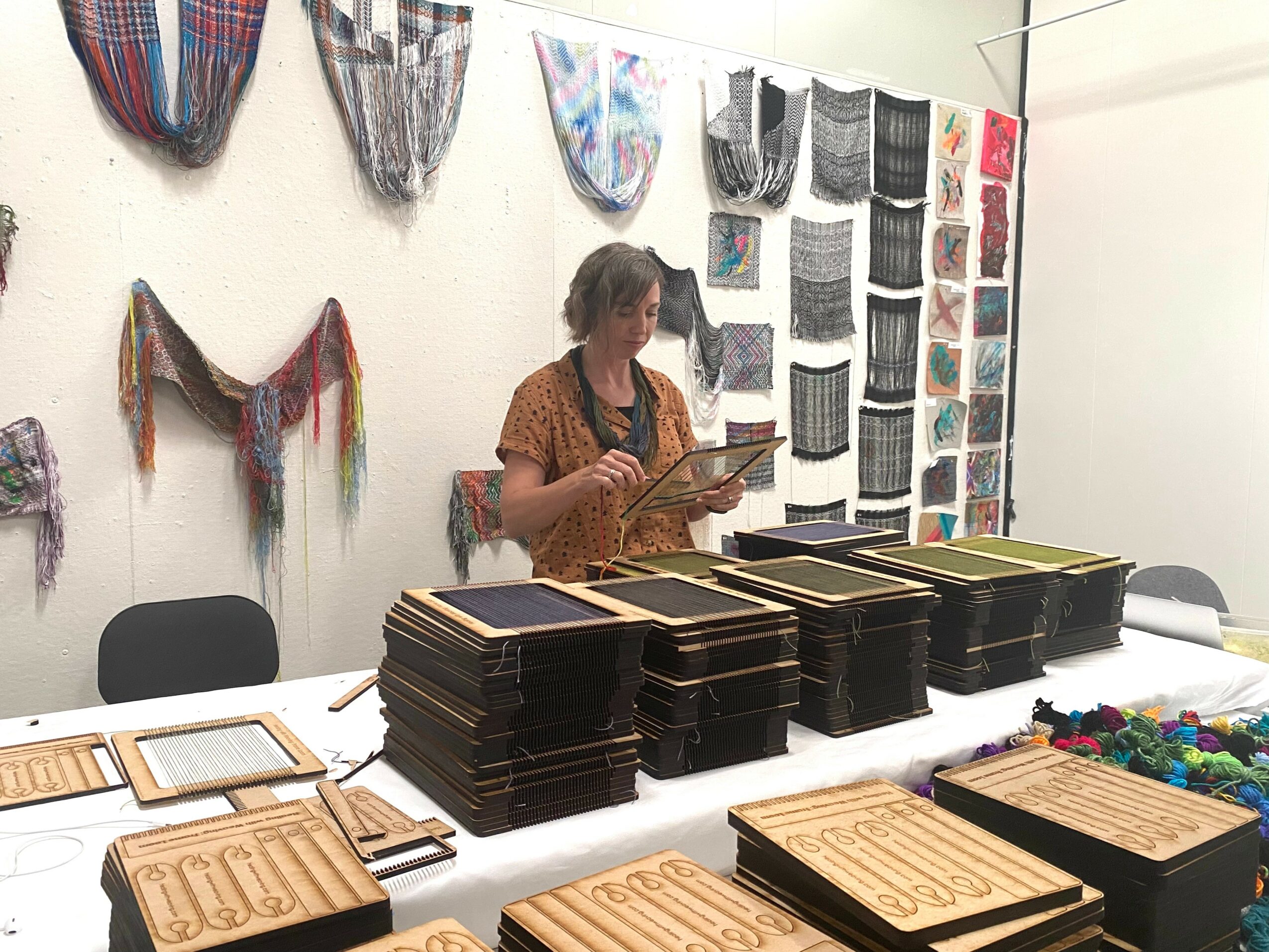
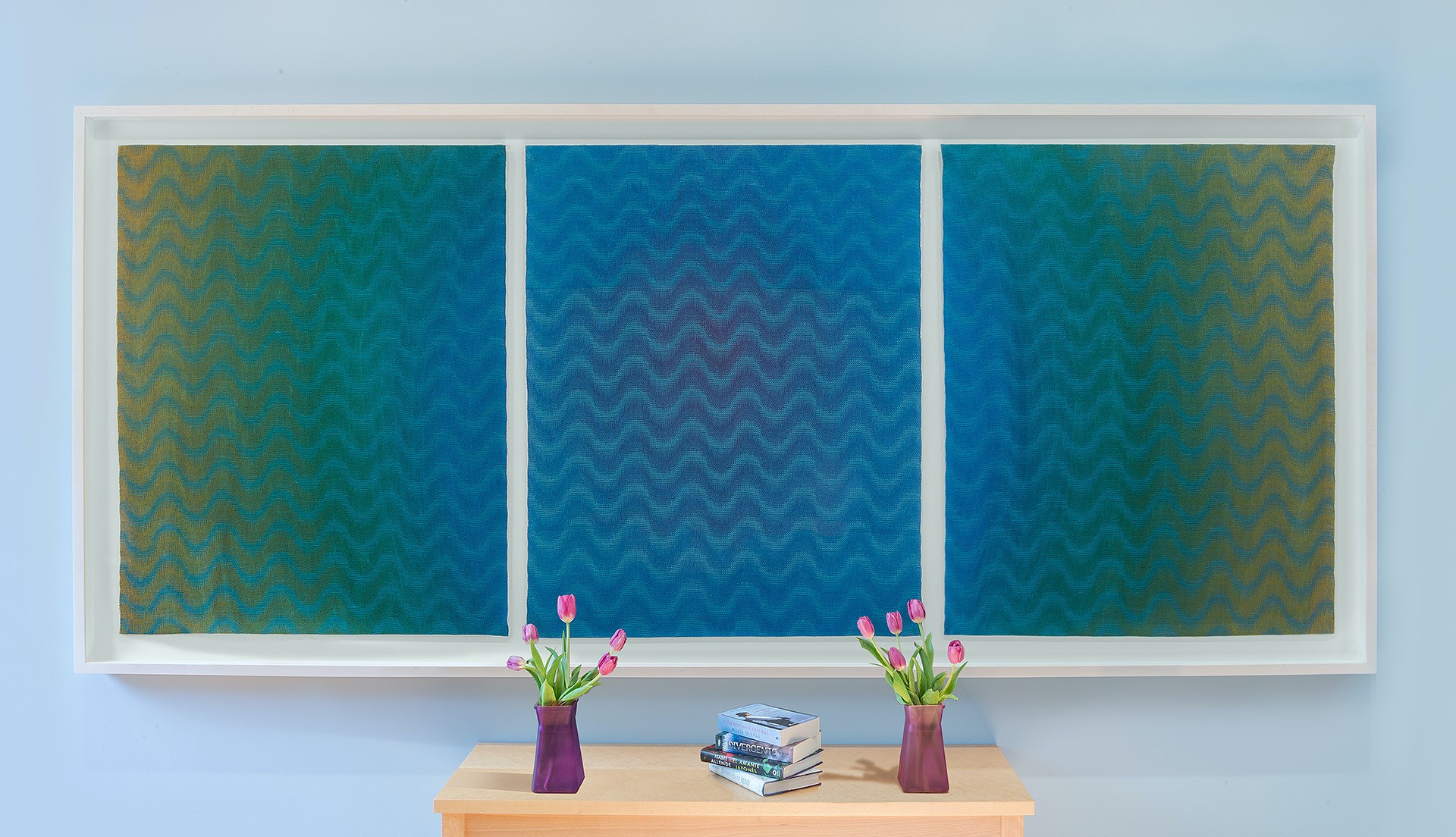
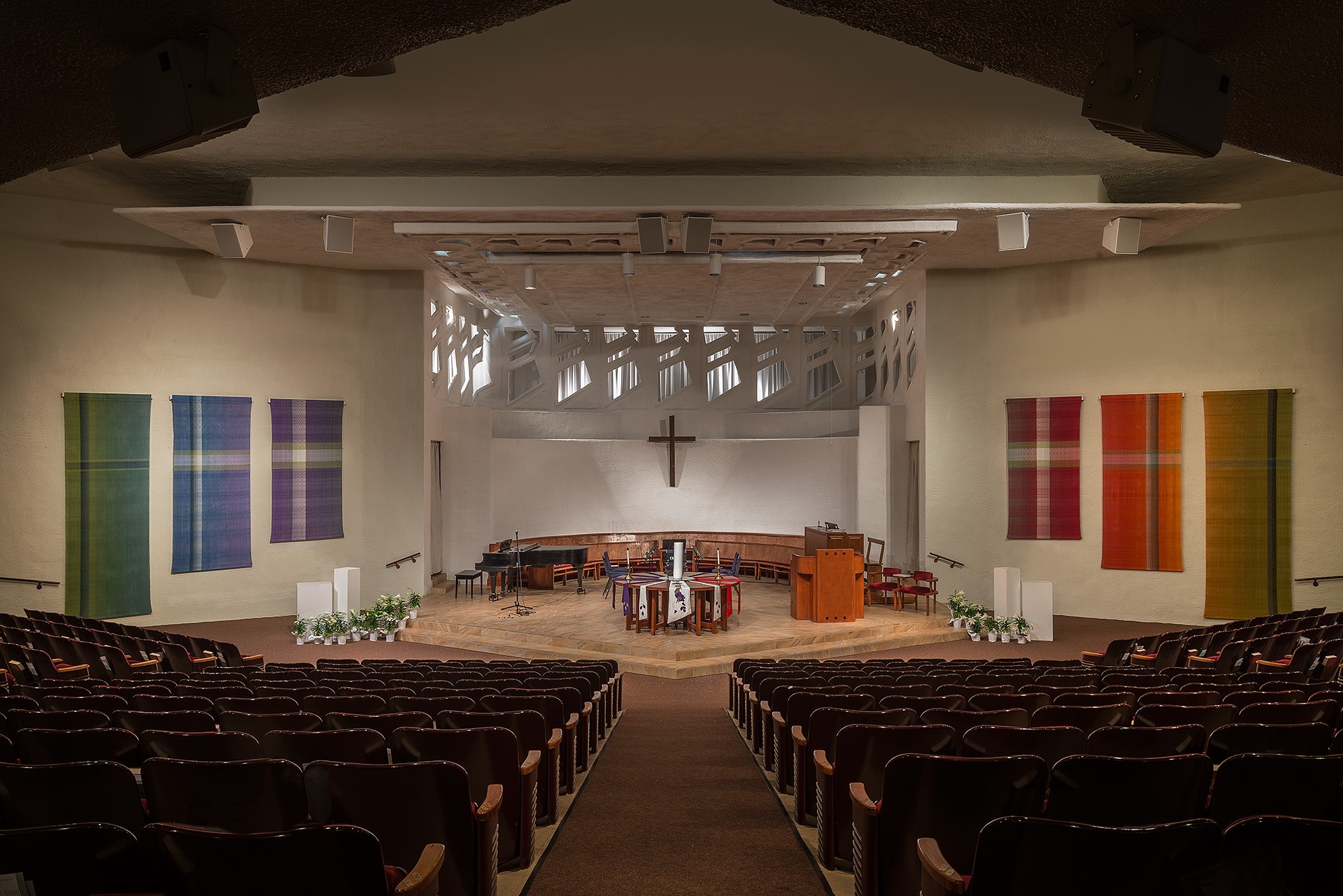
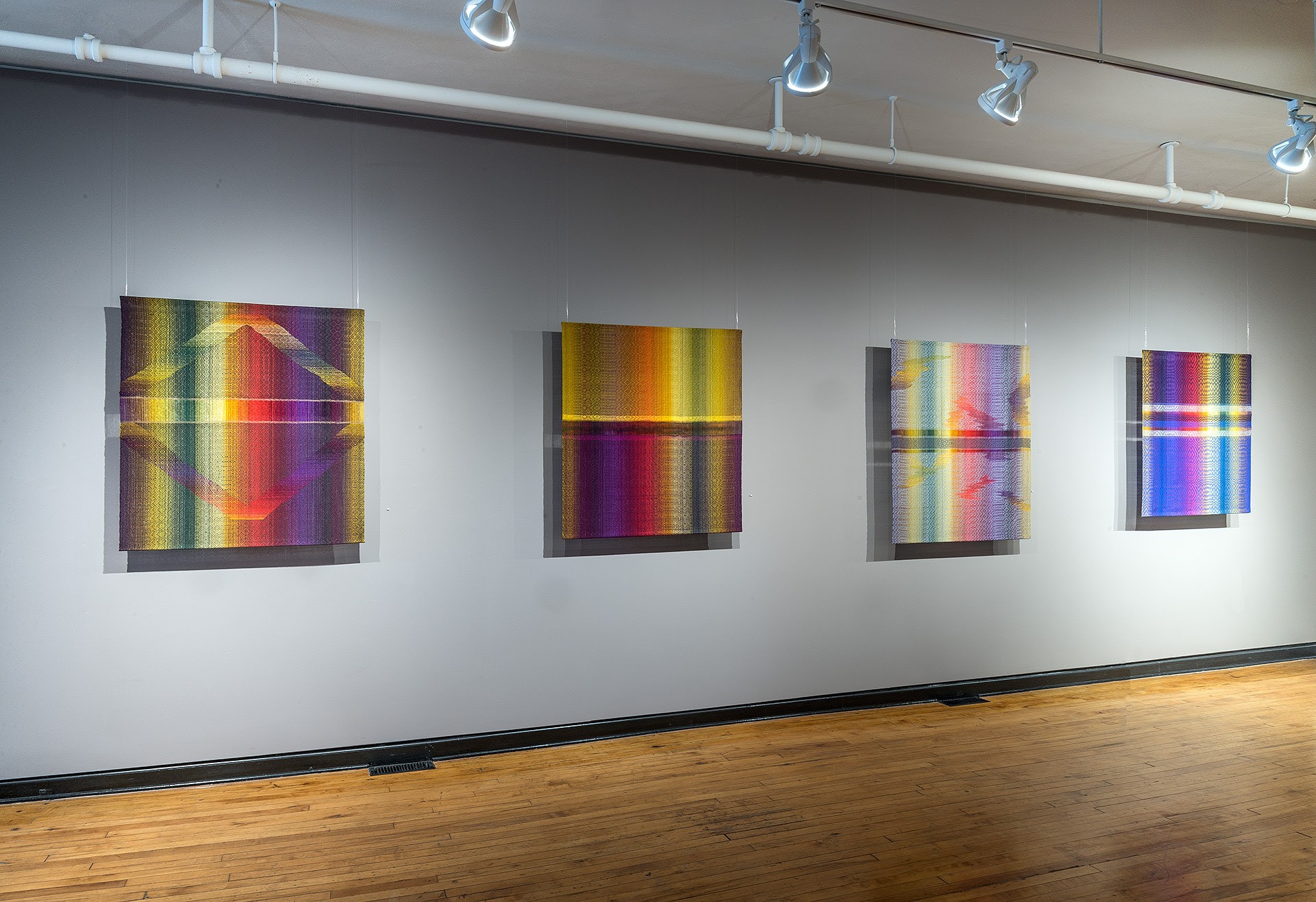
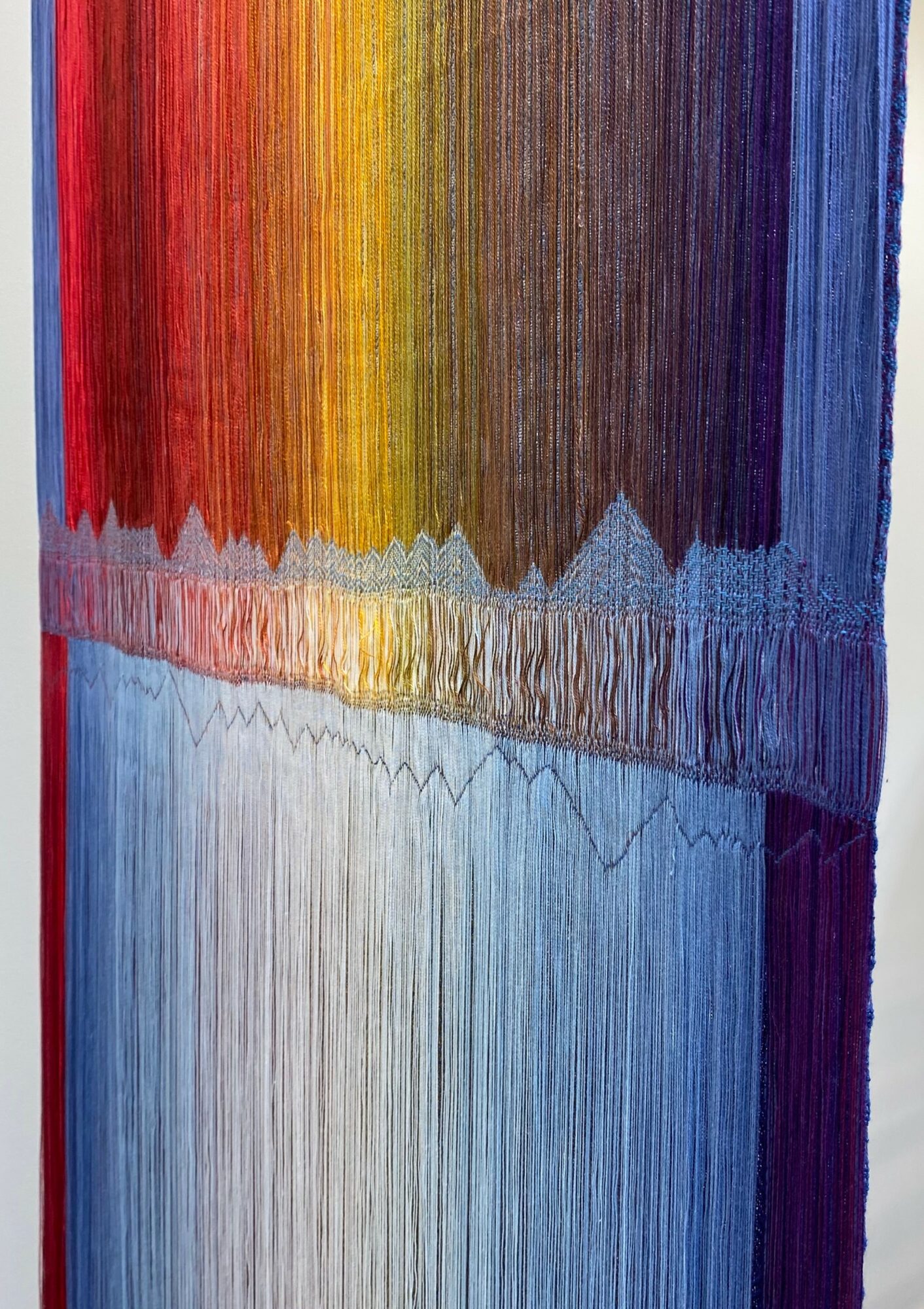
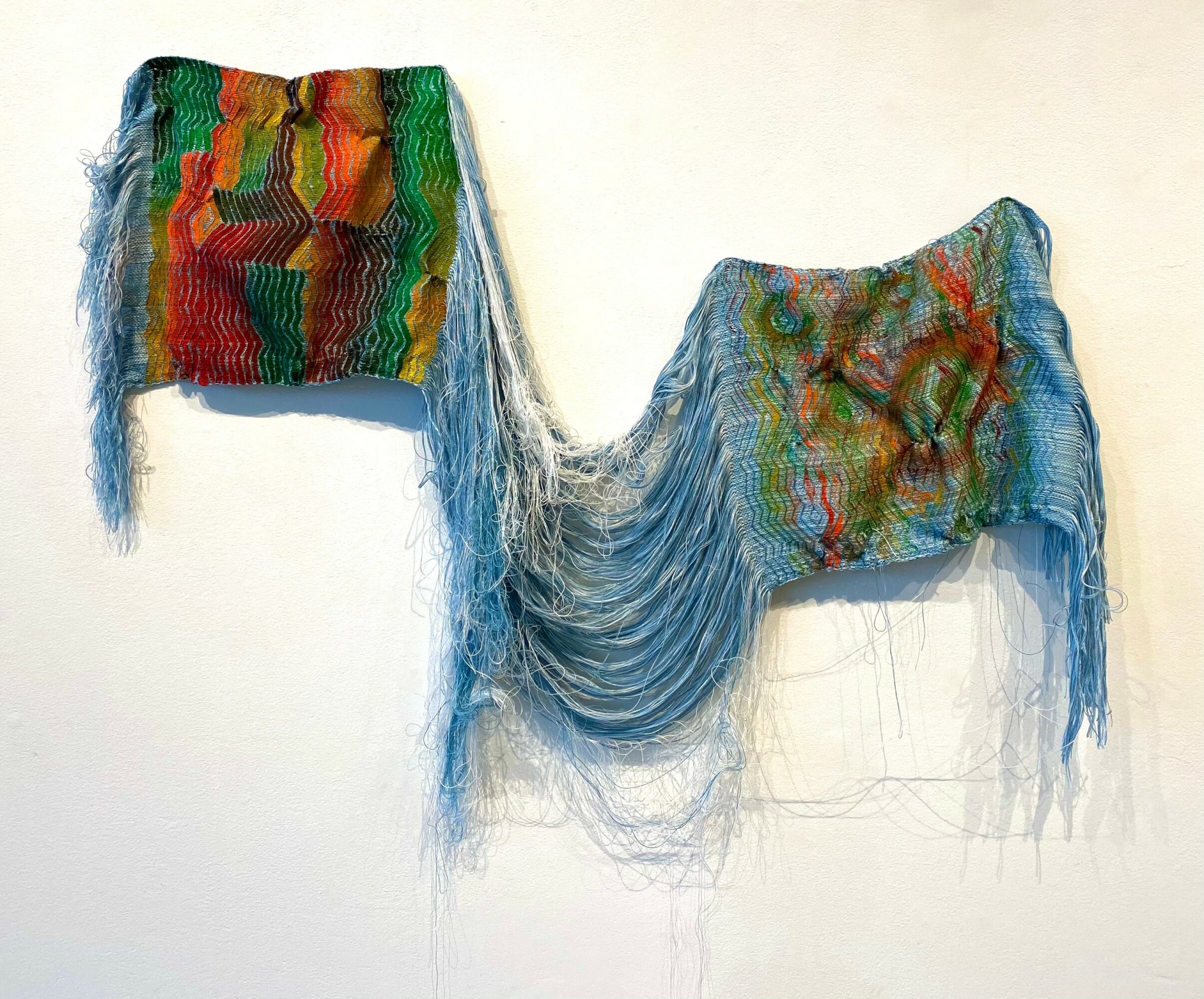
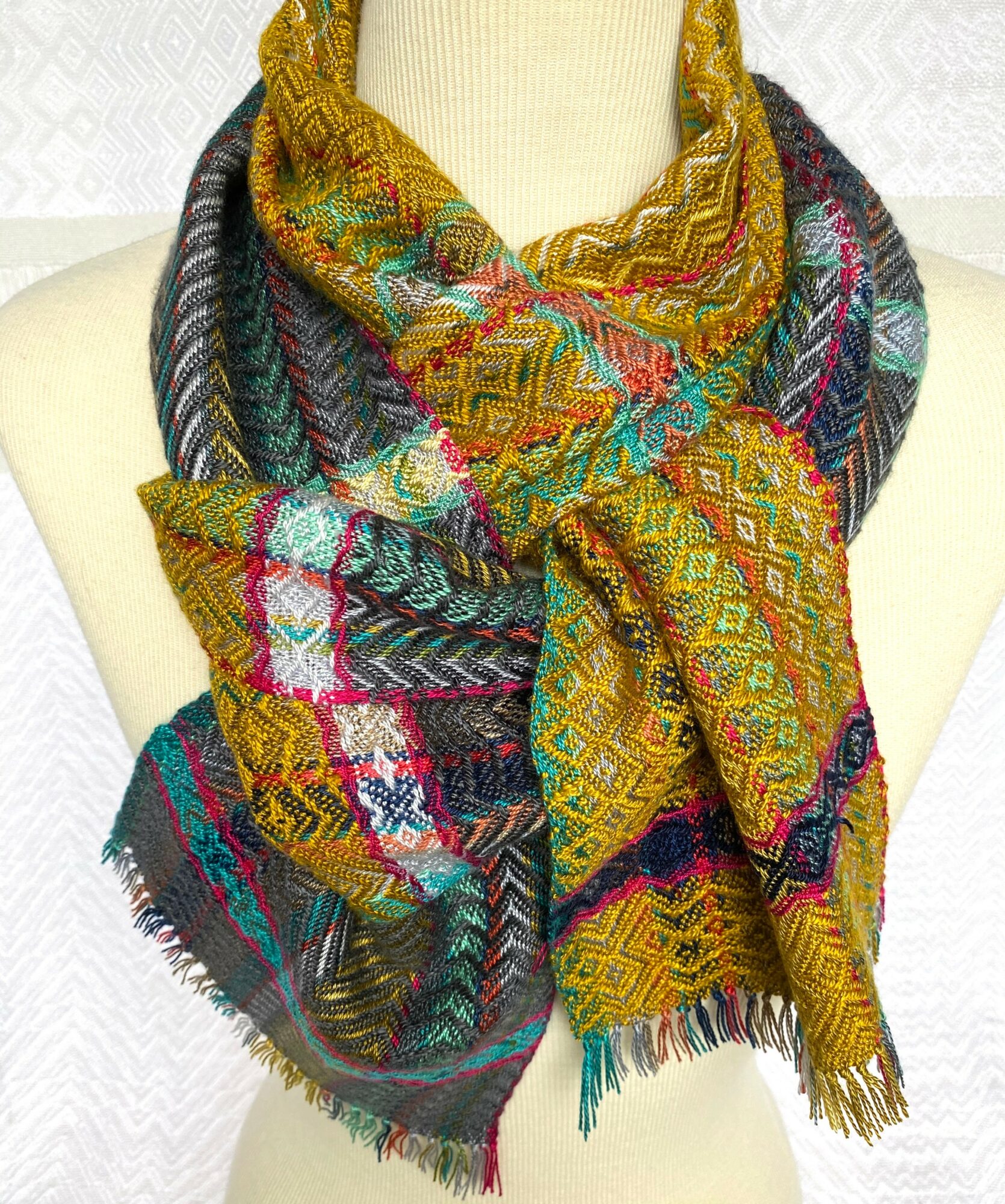
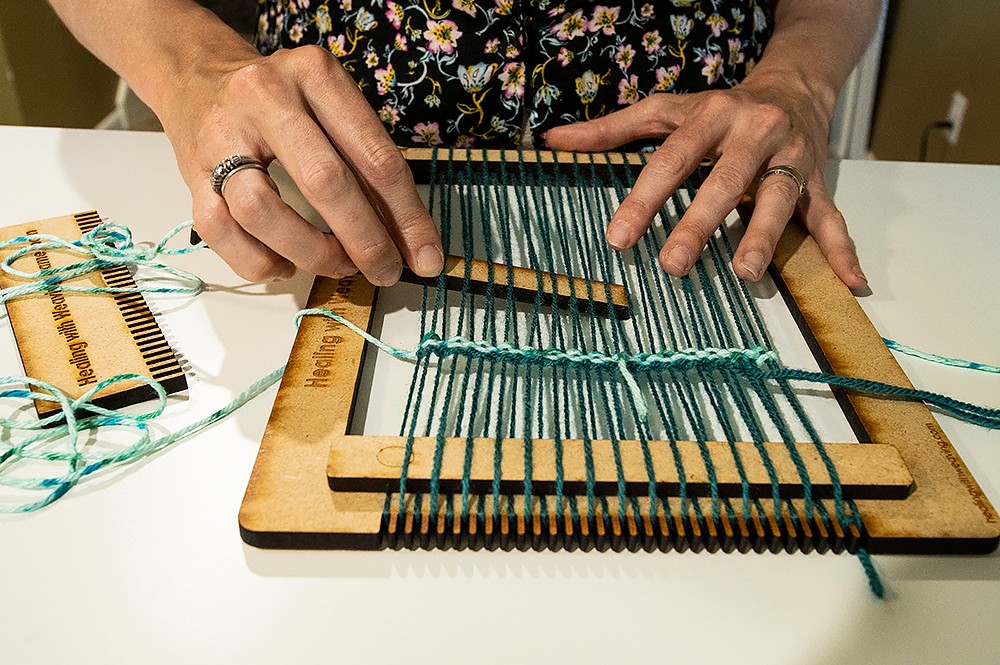
Image Credits
Julie and KCUR, and Debbie Barrett-Jones.

